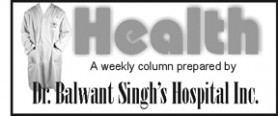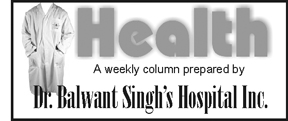Part I
Dr. Anirban Banerjee (MS,MRCS) – Consultant Surgeon
The organs and tissues of the body are made up of tiny building blocks called cells. Cancer is a disease of these cells.
Cells in different parts of the body may look and work differently but most reproduce themselves in the same way. Cells are constantly becoming old and dying, and new cells are produced to replace them. Normally, cells divide in an orderly and controlled manner. If for some reason the process gets out of control, the cells continue dividing, developing into a lump which is called a tumour.

In a benign tumour, the cells do not spread to other parts of the body but malignant tumours have the ability to spread beyond the original area. When the cancer cells reach a new area they go on dividing and form a new tumour. This is known as a secondary cancer or metastasis.
Breast cancer is cancer that forms in tissues of the breast, usually the ducts (tubes that carry milk to the nipple) and lobules (glands that make milk). It may occur in both men and women, although male breast cancer is rare. According to the American Cancer Society (ACS), an estimated 192,370 new cases of breast cancer were expected to be diagnosed among women in the United States last year.
Breast cancer is the most common (non-skin related) cancer in women and the second leading cause of cancer death in women in the United States. Every woman is at risk, and this risk increases with age. Breast cancer can usually be successfully treated when detected early.
Risk factors for breast cancer
To predict when and in whom breast cancer will occur, scientists have been trying to look for clues to signal which women may be more likely than others to develop the disease. These clues are called “risk factors.”
Having one or two of these risk factors doesn’t mean a woman will develop breast cancer. But knowing her personal risk factor profile and understanding what it means will help her and herdoctor plan a course of action that may reduce her chances of developing the disease or, at least, to detect it in its earliest, and most treatable stages.
The most common risk factors:
● Age. The risk of breast cancer increases as a woman grows older. The risk is especially high for women aged 60 and older. Breast cancer is uncommon in women younger than age 35, although it may occur in younger women.
● Sex. The highest risk factor for breast cancer is being female; the disease is about 100 times more common among women.
● Personal History. Women who have had breast cancer and women with a history of breast disease (not cancer, but a condition that may predispose them to cancer) may develop cancer.
● Family History. The risk of developing breast cancer increases for a woman whose mother, sister, daughter, or two or more close relatives have had the disease. It is important to know how old they were at the time they were diagnosed with cancer.
● The Breast Cancer Genes. Some individuals, both women and men, may be born with genes that regulate breast cell growth. Individuals who inherit an alteration in the BRCA1 or BRCA2 gene are at an “inherited” higher risk for breast cancer.
The rest of the risk factors all involve estrogen, a hormone that naturally occurs in men and women. However, at the time menstruation begins (at puberty), women start to produce larger amounts of estrogen and will continue to do so until they reach menopause.
Estrogen appears to play a key role in breast cancer. Although estrogen doesn’t actually cause breast cancer, it may stimulate the growth of cancer cells. Estrogen-related risk factors are:
● Having an early first period or menstrual bleeding (menarche).
● Having a late first pregnancy.
● Having no children.
● Use of Hormone Replacement Therapy (HRT). Based on the Women’s Health Initiative Study (2002), women do appear to have an increased risk of breast cancer while they are on HRT and a short time thereafter, compared to those who have never used HRT.
Use of Oral Contraceptives among women ages 35 to 64 does not significantly increase the risk of breast cancer.
Common to all women are daily lifestyle decisions that may affect breast cancer risk. These day-to-day choices involve factors such as poor diet, insufficient physical activity, alcohol use, and smoking.
● Decrease your daily fat intake – especially saturated or hydrogenated fats.
● Increase fibre in your diet.
● Eat fresh fruits and vegetables. In addition to their fibre content, fruits and vegetables have antioxidant properties that may help prevent some cancers.
● Limit alcohol. Evidence suggests that a small increase in risk exists for women who take on average two or more drinks per day (beer, wine, and distilled liquor).
● Don’t smoke. Although smoking doesn’t cause breast cancer, it can increase the risk.
HOW CAN WE DETECT
BREAST CANCER EARLY?
One of the earliest signs of breast cancer can be an abnormality that shows up on a mammogram before it can be felt. The most common signs of breast cancer are a lump in the breast. Finding a lump or change in your breast shape does not necessarily mean you have breast cancer. Additional changes that may also be signs of breast cancer include:
● Any new, hard lump or thickening in any part of the breast.
● Change in breast size or shape.
● Dimpling or puckering of the skin.
● Swelling, redness or warmth that does not go away.
● Pain in one spot that does not vary with your monthly cycle.
● Pulling in of the nipple.
● Nipple discharge that starts suddenly and appears only in one breast.
● An itchy, sore or scaling area on one nipple.
We will continue this discussion on breast cancer and early detection of breast cancer in the next edition of this column.





